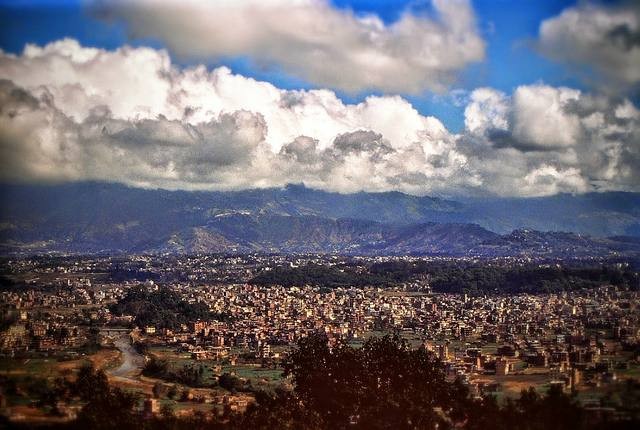
The Newar People: Old Inhabitants of Kathmandu

The Newar People: Old Inhabitants of Kathmandu
Swotah Travel
14109
08, 04 2018
Newars are the creators of some of Nepal's most spectacular cultural heritages and are the predominant inhabitants of Kathmandu valley. According to the 2011 census, the population of Newari people makes up 5% of the total population and is the sixth most populous ethnic group in Nepal. Most of these people live in the Bagmati zone, around Kathmandu, Bhaktapur and Lalitpur. However, they also exist in smaller numbers throughout the whole country.
If you're visiting Nepal, don't forget to spend some time in a traditional Newari house, wear their traditional dress, indulge in their delicious variety of cuisines, and immerse yourself in their unique language, culture, traditions, rituals, practices, and festivals. You can also dance to the beat of their traditional music for an even more memorable experience.
Settlements
Newar people are known for their unique and intricate Durbar squares, temple squares, sacred courtyards, stupas, open-air shrines, dance platforms, sunken water fountains, public rest houses, bazaars, and multistoried houses with elaborately carved windows. These elements are distinct from modern planning and are found in the historical cities of Kathmandu Valley, such as Lalitpur, Bhaktapur, Madhyapur Thimi, and Kirtipur. Smaller towns in the valley also have similar artistic heritage.
In addition, Newars have migrated to many other parts of Nepal in the last two centuries, establishing trade centers and settling in places such as Nuwakot, Nala, Banepa, Dhulikhel, Panauti, Dolakha, Chitlang, and Bhimphedi. They have earned a reputation as jewelry makers and shopkeepers, though today, they have also ventured into modern industry, business, and service sectors. Notable examples include Bandipur, Baglung, Silgadhi, and Tansen in the west and Chainpur and Bhojpur in the east.
Castes and Communities

The indigenous people of Nepal have created an ethnolinguistic society that is distinct from other ethnic groups. This society is divided into various groups based on their traditional hereditary occupations. These include Ritually pure occupational castes such as Balami (field workers and farmers), Bha/Karanjit (death ritual specialists), Chipa/Ranjitkar (dyers), Duhim/Putwar/Dali (carriers), Gathu/Malakar/Mali (gardeners), Khusa/Tandukar (palanquin bearers/farmers), Kau/Nakarmi (blacksmiths), Nau/Napit (barbers), Pun/Chitrakar (painters), and Sayami/Manandhar (oilpressers).
Other castes include Banra/Bare/Shakya (Buddhist temple priests and goldsmiths), Brahmin, Chathariya (Ksatriya) Sreṣṭha, Malla, Pradhan, Pradhananga, Maskay, Hada, Amatya, Mathema, Joshi (astrologers), Vaidya (Ayurvedic practitioners), Rajbhandari (assistant priests and treasurers), Karmacharya (Tantric priests), Kayastha (scribes), Chyame/Chama, Khala, Dhobi/Jogi (tailors, washermen, musicians), Dyala/Pode (temple cleaners, fishermen, sweepers), Gubhaju/Bajracharya (Buddhist purohits and temple priests), Jyapu (farmers), Suwal, Basukala, Kumha/Prajapati (potterers and clay workers), Shilpakar (wood smiths), Awale (brickmakers), Sapu (talented in music, art, dance, and antiques), Kulu (leather workers), Naye/Khadgi (butchers), Panchthariya Sreṣṭha (Chief Hindu trader and merchant group), Shrestha (administrators and traders), Tamrakar (coppersmiths), Uraya/Udas (Chief Buddhist trader, merchant and artisan group), Tuladhar, Bania (merchants), Kansakar (bronzesmiths), Rajkarnikar (sweetmakers), Sthapit, Kasthakar (architects/carpenters), etc.
Religion
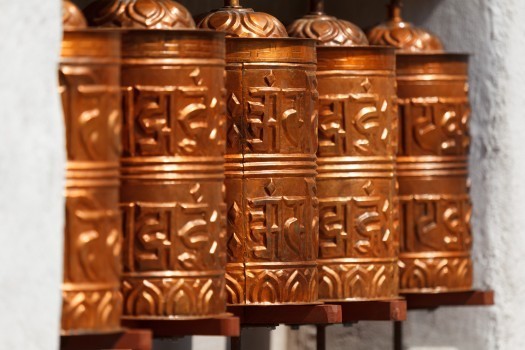
Most Newars practice both Hinduism and Buddhism. Out of the three main cities of the Bagmati zone, Patan is the most prominent Buddhist city, where four stupas built by the Indian emperor Ashoka are located. Bhaktapur is mainly Hindu, while Kathmandu is a combination of both religions. Both Hindu and Buddhist deities are respected and ceremonies are performed by both religious groups.
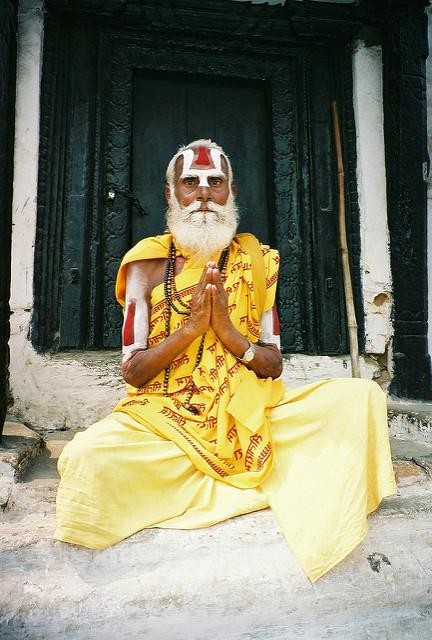
Hindus and Buddhists of the Newar community have their own distinct rituals and priests (Rajopadhyaya Brahmins and Vajracharyas respectively). Two of the most important holy places in the valley are Swayambhunath (Buddhist) and Pashupatinath (Hindu). Various castes pay homage to different goddesses on different occasions. No matter the religion, all rituals begin with the worship of Lord Ganesh at a special shrine known as a Ganesh Than.
Language
The Newari people of Nepal are a unique ethnic group bound together by their common language, Nepal Bhasa, and culture. It is estimated that there are 846,557 native speakers of the language, making up around 4% of the total population. Within the Newari community, there are a number of distinct dialects, such as the Dolakha Newar Language, Lalitpur Newar Language, Bhaktapur Newar Language, Banepa Newar Language, and Panauti Newar Language. Although they may speak different dialects, they are still able to communicate with each other using the language of Nepal Bhasa.
Traditional Costume

Newar women traditionally adorn a black cotton sari with a red border known as Haku Patasi or Haku Parsi, paired with a Misalan blouse, which is secured with cloth ties, and a shawl called Ga that is draped over the upper body. Men typically wear a long shirt, known as Tapalan, as well as tight-fitting trousers called Suruwa and a waistcoat or coat. This traditional attire is commonly worn during special occasions, official functions and festivals, and is still a daily outfit among the older generation.
Art and Architecture
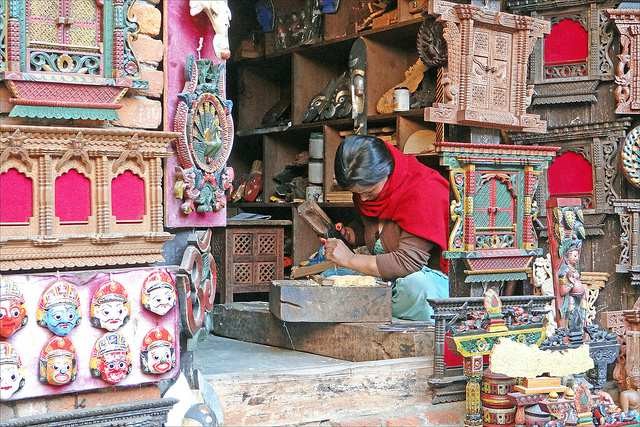
The art and architecture of Nepal is predominantly credited to the Newars, a community native to the Kathmandu Valley. Their traditional art is mainly religious in nature, such as devotional paubha paintings, sculptures and metal craftsmanship, which have achieved worldwide acclaim for their exquisite beauty. The oldest known paubha painting is the Vasudhara Mandala, created in 1365 AD. The influence of Newar art can also be seen in two 15th-century monasteries located in the former kingdom of Mustang in the Nepal Himalaya, where murals adorn the walls. Other Newar art forms include stone sculpture, wood carving, repousse art and metal statues of Buddhist and Hindu deities created using the lost-wax casting method.
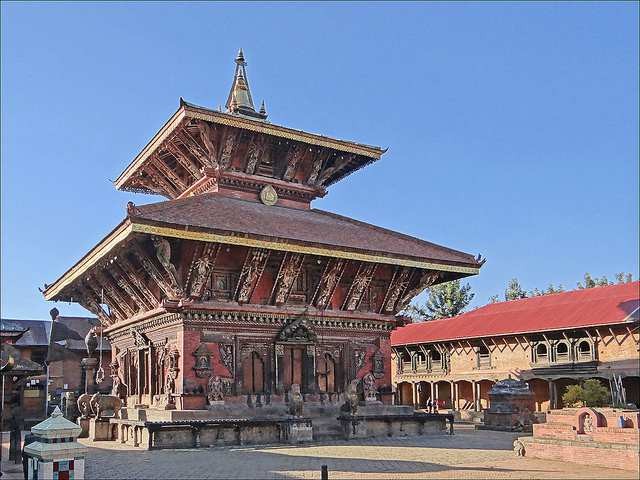
You may also like: Souvenirs from Nepal
The Kathmandu Valley is home to seven UNESCO World Heritage Sites and 2,500 temples and shrines that are a testament to the skill and aesthetic sense of Newar artisans. The valley is renowned for its multiple-roofed pagodas, which may have originated in this area and spread to India, China, Indochina, and Japan.
The Peacock Window of Bhaktapur and Desay Madu Jhya of Kathmandu are especially renowned for their wood carving. Building elements such as the carved Newar window, roof struts on temples, and the tympanum of temples and shrine houses exhibit traditional creativity and skill.As early as the seventh century, visitors have noted the skill of Newar artists and craftsmen, who have left their influence on the art of Tibet and China. Newars introduced the lost-wax technique into Bhutan, and they were commissioned to paint murals on the walls of monasteries there. Sandpainting of a mandala made during festivals and death rituals is another specialty of Newar art. In addition to their traditional religious art, Newar artists have also been at the forefront of introducing Western art style paintings incorporating elements such as lighting and perspective.
The chief monuments are located in the Durbar Squares of Kathmandu, Lalitpur and Bhaktapur, the old royal palace complexes built between the 12th and 18th centuries. Newa architecture consists of pagoda, the stupa, shikhara, chaitya, etc. The most famous artisan who influenced stylistic developments in China and Tibet was Arniko, a Newar youth in the 13th century AD. He is known for building the white stupa at the Miaoying Temple in Beijing.
Festivals
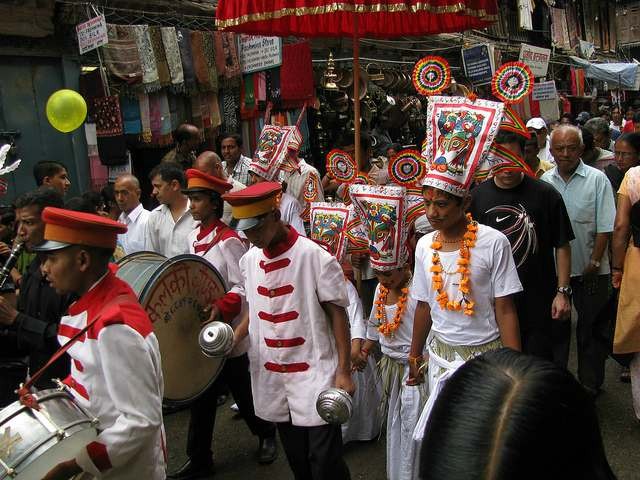
Newari culture is known for its contributions to culture, art, literature, trade, agriculture, cuisines and more. Newari people are merchants, craftsmen, artists, potters, weavers, dyers, and farmers. Throughout the year, they celebrate numerous festivals and ceremonies with the same enthusiasm and spirit. These include Yomari Punhi, Bisket Jatra, Bhoto Jatra, Gai Jatra, and Sithi Nakha. Additionally, they celebrate Swanti, Sakimila Punhi, Yoma, Ghayh, Swasthani, Sila Chahre, Holi Punhi, Pahan Charhe, Jana Baha Dyah Jatra, Bungdya Jatra, Swanya Punhi, Gathan Mugah, Gunla, Gunhu Punhi, Kuchhi Bhoyey, Pancha Dan Yenya, Mohani, and Mataya. These festivals are tied to Hindu holidays, Buddha’s birth, and the harvest cycle.
You may also like: Festivals You don't want to miss in Nepal
Music and Dance
The traditional Newar dance consists of various forms, including the sacred masked dance Nyetamaru Ajima, the religious dance without masks called Dyah Pyakhan, the ritual and meditation practice dance Chachaa Pyakhan, and folk dances. Additionally, there are also masked dance dramas known as Daboo Pyakhan that use music to tell religious stories.
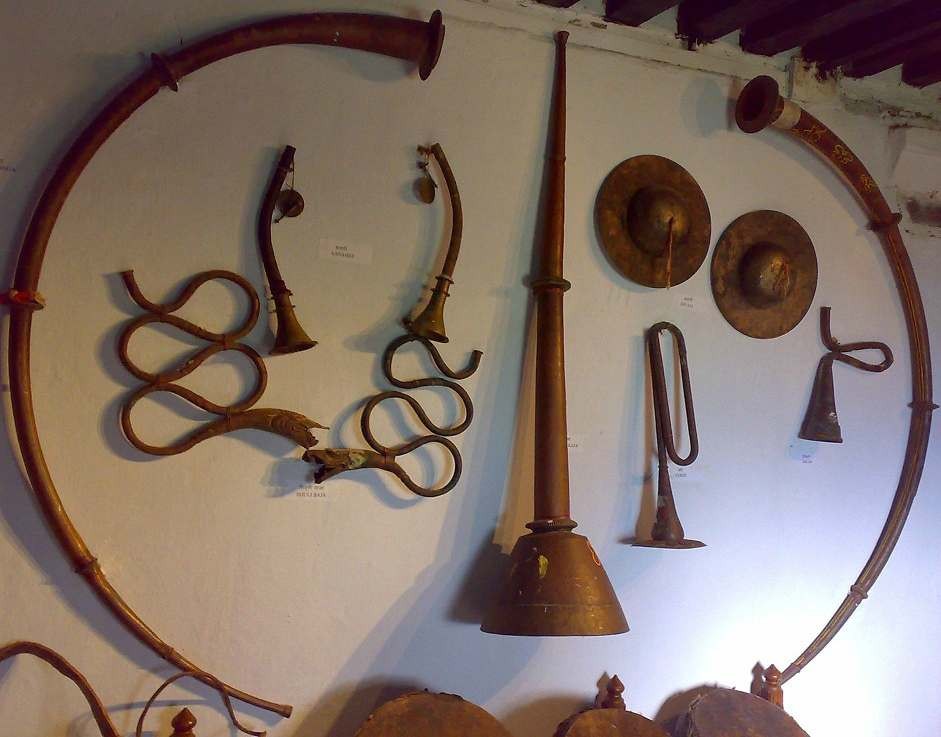
Traditional Newa music encompasses a variety of genres, such as sacred music, devotional songs, folk songs, seasonal songs, and ballads. Notable seasonal songs include Sitala Maju, Silu, Ji Waya La Lachhi Maduni, and Rajamati, which are usually associated with certain seasons and festivals.
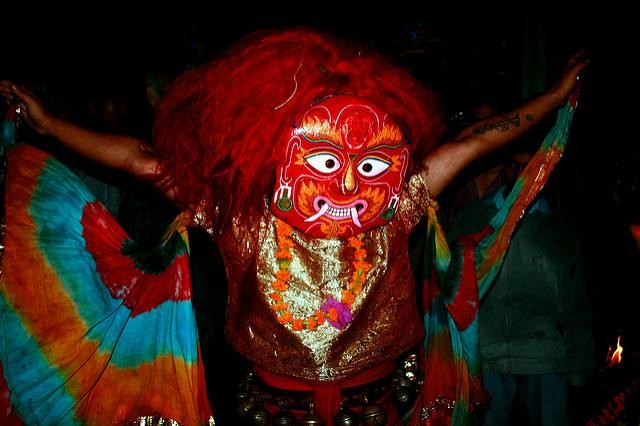
Newa music features a variety of percussion instruments, including the Dhimay, Khin, Naykhin, and Dhaa. Wind instruments such as the Bansuri (flute), Payntah (long trumpet), Mwahali (short trumpet), Chhusya, Bhusya, Taa (cymbals), and Gongs are also popular. While string instruments are not common, they are still used today. Musical bands accompany religious processions, wherein an idol of a deity is taken around the city in a chariot or portable shrine. These processions typically begin with an overture, which is a form of salutation to the gods. Furthermore, music is played during wedding processions, life-cycle ceremonies, and funeral processions.
Food and Wine

Newari cuisine is one of the most delicious and flavourful, with more than 200 dishes. It is heavily based on buffalo meat, with dishes for every edible part including intestine, stomach, and brain.
A traditional meal for any occasion usually includes Khaja Set (flattened rice with side dishes). Some of the most popular dishes include Kwati (soup of different beans), Vegetable Curry or Fried Green Vegetables, Kachila (spiced minced meat), Chhoyla (water buffalo meat marinated in spices and grilled), Pukala (fried meat), Wo (lentil cake), Paun Kwa (sour soup), Swan Puka (stuffed lungs), Syen (fried liver), Mye (boiled and fried tongue), Sapu Mhicha (leaf tripe stuffed with bone marrow), Sanya Khuna (jellied fish soup), Juju Dhau (yogurt), Sisabusa (fruits), Mari (sweets), Thwon (rice beer), and Ayla (local alcohol).
Newari people have been farming since ancient times, and this is likely why they have such a wide range of dishes to choose from.
Want to know more about Traditional foods and wine in Nepal? Take a look at this blog: Traditional Foods and Wine in Nepal
NEWSLETTER SIGNUP
Sign up to receive our trip ideas and travel offers!
Get updates and Exclusive Offers up to 20% Discount

